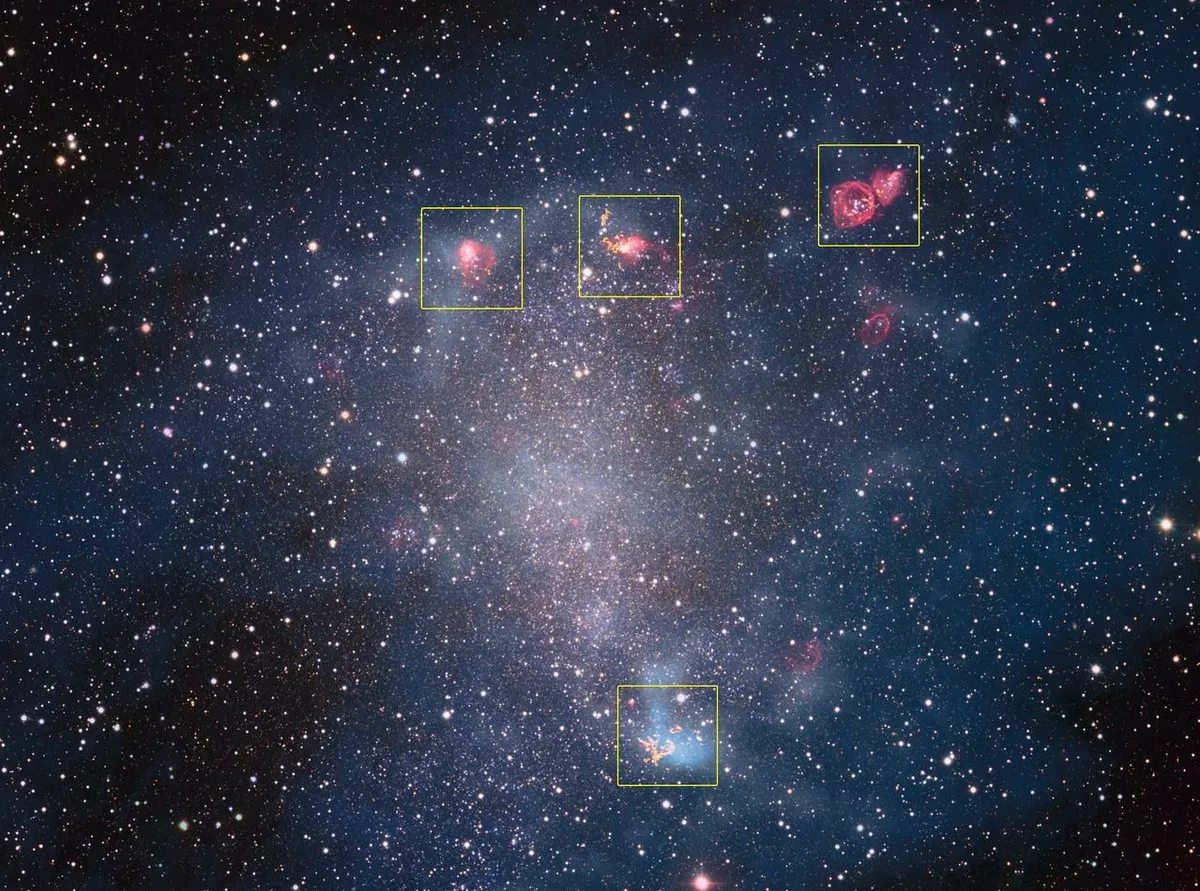Star formation is one of my favourite mysteries. While we can describe what happens in a few phrases – cold gas and dust collapses under its own gravity, until the density is high enough to sustain nuclear fusion – any attempt to add detail produces confusion and a seemingly never-ending list of questions.
Wrestling with this classical astronomical problem are the authors of a paper led by Heidelberg University’s Mélanie Chevance.
Part of the problem is that the events that set a protostar’s course take place deep within giant molecular clouds (GMCs), regions of cooling gas which are denser than their surroundings.
Read more from Chris Lintott:
- Observations shed light on the history of our Galaxy's black hole
- Observing spots on distant stars
- Black hole jets may be more unpredictable than thought
A nearby example is Orion A, which includes the Orion Nebula and many of the clusters and nebulae south of Orion’s Belt.
We know, or at least suspect, that the processes that happen in GMCs are affected by the galactic environment; whether there are other young stars nearby, whether a supernova recently exploded in the vicinity, whether one is in a spiral arm or not.
All of these things and more can affect whether the process of star formation gets started, or whether once started any particular collapsing cloud will indeed produce a star.
But we have only really studied such clouds in the Milky Way and in a handful of nearby galaxies.
As a result, we know little about GMCs. We don’t even know how long they live. Some think that an individual molecular cloud might persist for a hundred million years or so, forming multiple clutches of stars, while other astronomers suggest that a cloud exists for a mere (cosmic) blink of an eye, evaporating after no more than 10 million years.

By looking at the properties of clouds in nine local star-forming galaxies using ALMA – the interferometer in the Atacama desert that’s sensitive to sub-mm, or microwave, radiation – Chevance and colleagues hope to settle this debate.
ALMA provides maps of carbon monoxide, a key molecule found in the kind of denser gas seen in GMCs, and the team use observations of emission from hydrogen to trace where stars are actually forming.
The ratio of the two (and a bit of complex maths and thought) gives an indication of how quickly stars are forming in each galaxy.
The team’s first finding is that the amount of gas available doesn’t dictate how much star formation there is – something other than the presence of sufficient fuel must be significant.
And in each galaxy, though there is some variation, GMCs seem to come and go relatively quickly, lasting only tens of millions of years.
The overall picture is of a complex set of circumstances leading to the formation of any particular star.
Even small disruptions to the environment, for example from the wind of a nearby young star, might be enough to disrupt star formation, or alternatively to destroy a GMC completely.
The message is pretty clear. Understanding star formation requires getting into the detail and these observations are only the start.
This article originally appeared in the January 2020 issue of BBC Sky at Night Magazine.
Chris Lintott was reading The lifecycle of molecular clouds in nearby star-forming disc galaxies by Mélanie Chevance. Read it online here.
